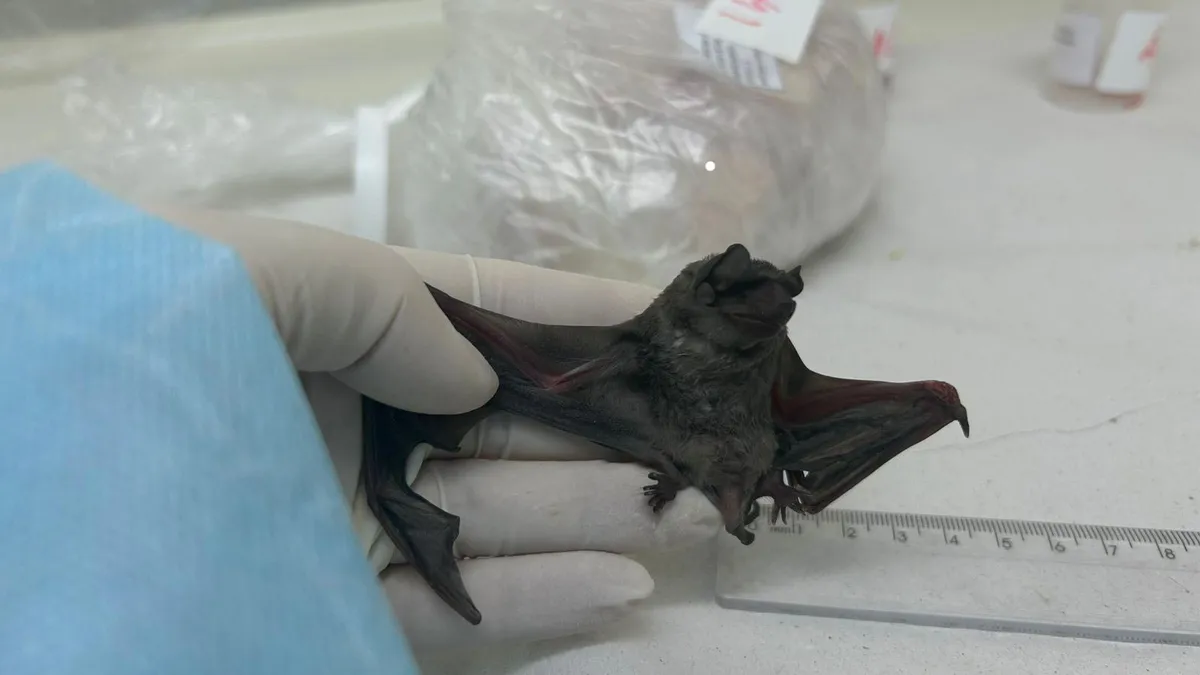
In a groundbreaking discovery in the state of Ceará, Brazil, researchers have identified a novel coronavirus that exhibits striking similarities to the virus responsible for the Middle East respiratory syndrome (MERS), which was first documented in 2012. This significant finding raises questions about the potential for human infection, with experiments scheduled to assess this possibility in 2025.
The research team, composed of scientists from the Brazilian states of São Paulo and Ceará, partnered with colleagues from Hong Kong University (HKU) in China to unveil this novel coronavirus in bats. Notably, this is the first virus of its kind discovered in South America that is closely related to MERS-CoV. The detailed findings of this research were published in the reputable Journal of Medical Virology (JMV).
“Currently, we cannot confirm the virus's ability to infect humans. However, we have identified parts of the virus's spike protein, which attaches to mammalian cells to initiate an infection. This suggests a potential interaction with the receptor utilized by MERS-CoV,” stated Bruna Stefanie Silvério, the first author of the article. Silvério, who holds a master’s degree from the Federal University of São Paulo’s Medical School (EPM-UNIFESP), is presently pursuing her PhD at the same institution.
The researchers analyzed samples from bats collected by the Central Health Laboratory (LACEN) of Ceará in Fortaleza, identifying seven coronaviruses from five out of 16 oral and rectal swabs. These findings reveal a significant genetic diversity among the coronaviruses identified. The bats belonged to two distinct species: Molossus molossus, an insectivore, and Artibeus lituratus, a frugivore.
In previous studies conducted by the teams at LACEN Fortaleza and EPM-UNIFESP, variants of the rabies virus closely related to those found in marmosets were also discovered in bats. This underscores the crucial role bats play as viral reservoirs. “Continuous epidemiological surveillance of bats is essential. It helps identify circulating viruses and the risks of transmission to other animals and humans,” emphasized Ricardo Durães-Carvalho, the last author of the article and a professor at EPM-UNIFESP.
The MERS coronavirus was first detected in Saudi Arabia in 2012. Since then, 27 countries have reported cases, leading to 858 confirmed deaths due to this infection and related complications. The Brazilian researchers found a genetic sequence that shares a 71.9% similarity with the MERS-CoV genome, and the spike protein gene exhibited a 71.74% similarity with a variant isolated from humans in Saudi Arabia in 2015.
To explore whether this novel coronavirus can bind to human cells, high-biosecurity laboratory experiments will be conducted, scheduled to take place at HKU in 2025. Silvério is also preparing for an internship at HKU’s School of Public Health, where she will work under the supervision of Professor Leo L. M. Poon, a leading expert in public health virology.
In a related study published in the Journal of Medical Virology, the same research group previously reported the detection of a human-associated gemykibivirus-2 in one of the analyzed M. molossus bats. This virus showed a high similarity to a gemykibivirus found in human cerebrospinal fluid and was also detected in blood bank samples. Previous research indicated the presence of this virus in patients with various conditions, including HIV and unexplained encephalitis.
The identification of this virus in bats marks a significant milestone and required the development of novel primers aimed at the genetic sequence of the gemykibivirus detected in humans. “The limited availability of viral sequences in databases hindered a more in-depth analysis. However, our findings lay the groundwork for future investigations,” Silvério remarked.
Durães-Carvalho also emphasized the need for systematic, optimized, and integrated analyses across multiple sectors. “These efforts will generate data on unified platforms, aiding health systems in monitoring and potentially preventing epidemics and pandemics,” he stated. This research received support from FAPESP through various projects and scholarships, highlighting the importance of funding for scientific research in public health.